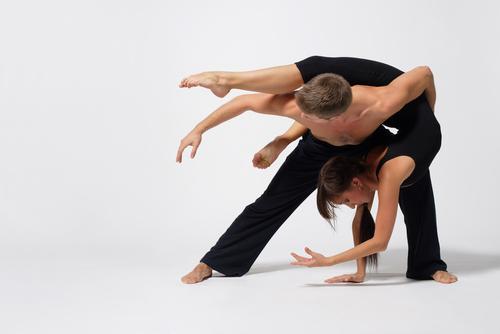
Ballet is built on moments of trust and connection like this one. Partnering is an essential part of telling a story, creating an emotional undertone and suggesting the deeper implications of the relation between two people, traditionally a man and a woman. The man’s assistance allows the woman to create an impression of freedom and amplitude, as her range of motion expands. In her book “Balanchine Technique,” the former New York City Ballet dancer Suki Schorer. . . writes that the man hones his partnering so that the woman “may dance higher or lower, she may do more beats or more turns, she may dance faster or slower, she can go farther off her balance, and she can combine with her partner to flow in and out of more shapes.”
This Marina Harss piece is about partnerships in dance, of course, and yet it makes a point about complementarity that, when used with regards to traditional marriage, often inspires a sneer: men and women are different, and they have very different strengths, which allow them to do very different things; those strengths complement each other, permitting each to reach their greatest potentiality and self-expression. She relies on the gentle strength of his lift to help her achieve moments of transcendent, heart-stopping beauty. He gets to share, with his own subdued steadiness, and together they create something, and its totality is a composition of wonder.
Outside of the ballet, a man and woman, partnered, become a similar unit of awesome creation. Within a personal partnership (let’s call it a marriage) there exists a need for different types, different strengths, skills and instincts, and specific roles — with trained and measured responsibilities necessary in order to create that which transcends. One lifts, the other extends; one is the centering pole about which the other may fly and turn and reach, until both are raised to something new.
And my saying that will undoubtedly infuriate some people and have them lobbing charges of “misogyny” and various phobias and hatreds in my direction, because it’s easier to fall back on buzzwords and bumperstickers than to check my archives.
Complementarity is real. It is as real in marriage and social relationships as it is in ballet. It is necessary for the continuation of the world. It gets a bad rap, sadly, thanks to people who have tried to use the word — and the teaching — as a means to ensnare both men and women into tight, narrow directives of what they may or may not do. Complementarity is not a trap meant to imprison. It is a pas de deux, meant to tell a large story.
I encourage you to read the whole NY Times piece, because it is very good. I came away from it thinking how similar the discussion of dance partners is to the discussion of marriage.
But any eventuality can be handled as long as the two partners are able to communicate what they need. In an ideal partnership, both know and appreciate what the other is doing, and trust that everything will be all right. “As soon as I put my hands on her waist,” Mr. Stearns said of the understanding he has with certain ballerinas, “she reacts. It’s almost a spiritual thing — you feel each other.
Complementarity is, indeed, a spiritual thing. You feel each other. It is part of the wholeness of co-creativity. Between a man and woman — within marriage, as in ballet — it is a true sweating of Grace in motion.”











